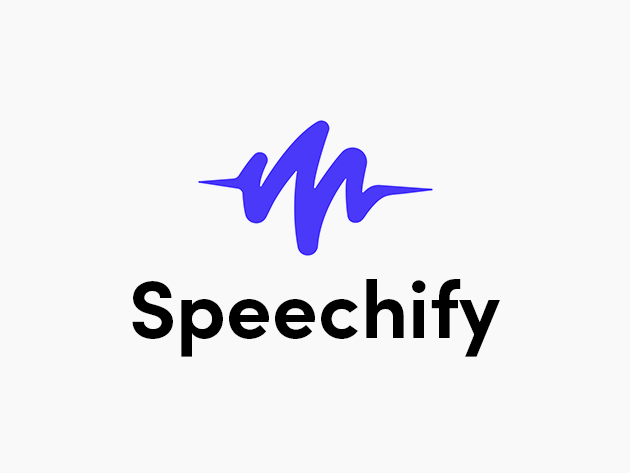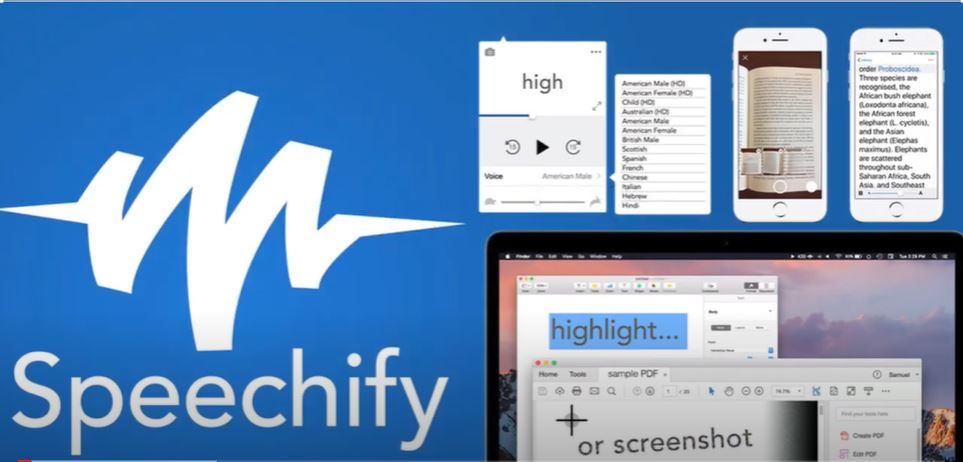The 2024 TTS Overview: Harnessing AI for Advanced Speech Synthesis

The 2024 Audio Revolution: Speechify's Impact on AI Text-to-Speech Synthesis
As we step into 2024, the audio revolution is in full swing, spearheaded by innovative platforms like Speechify. With AI text-to-speech (TTS) technology at the forefront, Speechify is redefining the way we interact with written content, offering an auditory experience that promises to cut reading time in half. This leap forward is empowering more than 25 million users — from students grappling with large volumes of material to professionals seeking to enhance their productivity. By utilizing AI and deep learning, Speechify is not only providing a faster way to consume information but also revolutionizing the field of TTS with voices that offer unprecedented naturalness and diversity.
In the burgeoning landscape of TTS technology, Speechify stands out with its ability to simulate an array of voices, including those of well-known figures such as Gwyneth Paltrow and Snoop Dogg, illustrating a new era of personalized audio content. This advancement showcases the sophisticated neural network models and machine learning techniques that form the backbone of TTS development, catering to varied preferences and enabling the technology to permeate a broader spectrum of use cases. The implication of this technology for content creation, accessibility, and even entertainment cannot be overstated, as Speechify's AI-driven approach opens up new possibilities for auditory communication and engagement.
| Topics | Discussions |
|---|---|
| Overview of TTS Advances | Insights into how the latest TTS technologies are reshaping the landscape of digital communication with enhanced audio experiences. |
| Text to Speech 2024: Revolutionizing Audio with AI Voices | A closer look at how Speechify's innovations in AI voice technology will change the way we interact with text-to-speech systems. |
| AI-Driven TTS Technologies | Exploring the cutting-edge of AI in TTS, including synthesizing celebrity voices and customizing user experiences. |
| Coding for Cutting-Edge TTS | Guidance on programming and embedding the latest TTS features into various software applications. |
| Speechify's Applications in Different Domains | Understanding the multi-domain applications of Speechify's TTS technology from academia to industry. |
| Common Questions Re: AI TTS | Answering frequently asked questions about AI TTS tools and technologies, focusing on usability and innovation. |
Overview of TTS Advances
The rapid progression in Text-to-Speech (TTS) technology is replete with specialized terminology reflecting its depth and diversity. Grasping these key terms will enable professionals, from research scientists to software engineers, to fully appreciate the intricate details and nuances that characterize the latest TTS developments. Below is a glossary that provides concise definitions for the fundamental terms associated with TTS technologies—terms that signify colossal strides in the realms of artificial intelligence and audio development.
TTS (Text-to-Speech): The technology that converts digital text into spoken audio.
AI (Artificial Intelligence): The simulation of human intelligence processes by machines, particularly computer systems.
Deep Learning: A branch of machine learning based on algorithms that attempt to model high-level abstractions in data by using multiple processing layers with complex structures.
Machine Learning: A type of AI that allows software applications to become more accurate in predicting outcomes without being explicitly programmed to do so.
Neural Networks: A series of algorithms that endeavor to recognize underlying relationships in a set of data through a process that mimics the way the human brain operates.
Synthesis: The process of generating sound waves that emulate human speech in TTS systems.
Synthetic Voice: A computer-generated voice that is produced by the TTS system.
API (Application Programming Interface): A set of routines, protocols, and tools for building software and applications that allow different programs to communicate with each other.
Latency: The delay before a transfer of data begins following an instruction for its transfer; in TTS, it could refer to the delay between text input and speech output.

Text to Speech 2024: Revolutionizing Audio with AI Voices
Promising an audio revolution in 2024, Speechify is set to transform the landscape of TTS technology. It pledges to halve reading times for over 25 million users through an advanced auditory platform. By offering an audible alternative to traditional reading, Speechify aims to serve a broad audience range, delivering efficiency and convenience. This service, with its promise of enhanced productivity and versatility, uniquely positions itself to meet the varied demands of students and professionals alike.
The hallmark of Speechify's advancement lies in its array of voice options, including those modeled after popular cultural figures. This capability not only demonstrates the service's technical prowess in replicating celebrity voices through AI and machine learning but also underscores an important shift towards more personalized and engaging TTS experiences. With technology advancing rapidly, it is highly probable that Speechify's AI algorithms are leveraging deep neural networking and sophisticated linguistic models to capture the distinctive tonal features of human speech.
Speechify's extensive voice selection underscores their commitment to catering to diverse user preferences and a wide array of use cases. Whether it’s enhancing the experience of reading books, navigating online content, or bringing scripts to life, the service offers a customizable solution. Introduced with a 'Try for free' feature, it connotes an assurance in the technology's caliber and a user-centric approach to service delivery. Moreover, the phrasing suggests Speechify is aimed at broader, non-technical audiences, seeking to integrate high-level TTS functionality with everyday, pop-culture-savvy consumer applications.
AI-Driven TTS Technologies
As we peer into the horizon of TTS technologies, the role of AI becomes increasingly central. The ability to generate speech that's not just clear, but also emotionally resonant and context-aware, is one of the key achievements of AI-driven TTS. The sophistication behind this technology involves neural networks that are trained on vast datasets of human speech, spanning different accents, dialects, and languages. These networks, through a process of machine learning, have come to understand the subtleties of human speech and effectively mimic it in a way that is revolutionizing the field.
In the realm of TTS, AI's contributions are not just limited to speech quality. AI drives the development of voices that can change their tone, pitch, and speed based on the context or the user's emotions—a feat that mirrors human conversational patterns. This advancement is crucial not only for making technology more accessible but also for creating engaging experiences that resonate with users on a personal level.
Further developments that capitalize on AI include language models that allow for multilingual support, enabling TTS technologies to cater to a global user base. With each passing year, TTS systems are becoming more intuitive, adaptable, and integrated, a testament to the power of AI in bridging digital experiences with human touchpoints.
Coding for Cutting-Edge TTS
Implementing Speechify APIs in Development Projects
Integrating Speechify's text-to-speech services into development projects can significantly enhance the auditory dimension of applications. While direct code samples for Speechify are not provided, the process typically involves accessing the Speechify API through a series of HTTP requests. Developers can use popular programming languages like Python or JavaScript to make these requests, sending text data and receiving audio files as a response.
An example using Python might look like this:
import requests
response = requests.post(
'https://api.v6.unrealspeech.com/stream',
headers = {
'Authorization' : 'Bearer YOUR_API_KEY'
},
json = {
'Text': '''<YOUR_TEXT>''', # Up to 1,000 characters
'VoiceId': '<VOICE_ID>', # Scarlett, Dan, Liv, Will, Amy
'Bitrate': '192k', # 320k, 256k, 192k, ...
'Speed': '0', # -1.0 to 1.0
'Pitch': '1', # 0.5 to 1.5
'Codec': 'libmp3lame', # libmp3lame or pcm_mulaw
}
)
with open('audio.mp3', 'wb') as f:
f.write(response.content)While this is a simplified illustration, actual integration would likely handle additional responses and errors, and provide a method to download or stream the audio from the provided URL.
Advanced TTS Features: Code Integration and Customization
Incorporating advanced TTS features involves leveraging the TTS service's full suite of capabilities, such as voice customization, various language options, and modifying attributes like pitch and speed. For most APIs, this involves sending additional parameters in the API request that instruct the TTS engine on how to manipulate the voice output.
A more complex example with customization options in JavaScript using Node.js might include:
const axios = require('axios');
const fs = require('fs');
const headers = {
'Authorization': 'Bearer YOUR_API_KEY',
};
const data = {
'Text': '<YOUR_TEXT>', // Up to 1,000 characters
'VoiceId': '<VOICE_ID>', // Scarlett, Dan, Liv, Will, Amy
'Bitrate': '192k', // 320k, 256k, 192k, ...
'Speed': '0', // -1.0 to 1.0
'Pitch': '1', // 0.5 to 1.5
'Codec': 'libmp3lame', // libmp3lame or pcm_mulaw
};
axios({
method: 'post',
url: 'https://api.v6.unrealspeech.com/stream',
headers: headers,
data: data,
responseType: 'stream'
}).then(function (response) {
response.data.pipe(fs.createWriteStream('audio.mp3'))
});Again, this is a simplified code sample meant to illustrate the process, and real-world implementation would need to address streaming or downloading the audio, error handling, and accommodating user input.
Speechify's Applications in Different Domains
Unreal Speech's text-to-speech synthesis API is heralding a new direction for cost-effective and high-quality voice generation. It claims to cut TTS costs by up to 90%, a feature that can benefit a broad spectrum of users. Academic researchers, for instance, can utilize such cost savings to enhance their research capabilities within language studies and AI development, without incurring the high expenses typically associated with voice synthesis.
Software engineers and game developers are set to benefit from Unreal Speech's promise of reducing TTS costs by up to ten times compared to other services like Eleven Labs and Play.ht. The affordable rates coupled with high-quality output mean that creating immersive environments and engaging game characters with realistic voice interactions becomes more feasible. Further, the platform's commitment to a latency of just 0.3 seconds underscores its applicability in real-time applications where quick response times are crucial.
For educators, the availability of an extensive range of characters per month—estimated at around 14,000 hours of audio under the Enterprise Plan—at a flat rate, supports broad implementation across educational material and resources. The API's diverse voice choices also hold the promise for more engaging teaching aids, potentially leading to better student engagement and learning outcomes. With the integration of voice AI into educational technology, the barriers to learning can be significantly reduced for students who benefit from auditory learning styles.
Common Questions Re: AI TTS
Decoding AI Tools for Text-to-Speech: How Do They Work?
AI tools for text-to-speech function by using sophisticated neural networks to process text and convert it into speech. These networks are trained on extensive datasets to understand the subtleties of human speech and reproduce them accurately in the synthesized voice.
Identifying the Best AI Voice Generators on the Market
The top AI voice generators are identified based on their ability to deliver high-quality, natural-sounding voices. They are evaluated on voice clarity, emotion expression, language versatility, and ease of integration into various platforms.
Understanding AI Voice Technology: What Does It Offer?
AI voice technology offers the ability to synthesize speech that is increasingly authentic and personalized. The latest advancements provide a level of realism that enhances user experiences in numerous applications, from navigational systems to interactive content.